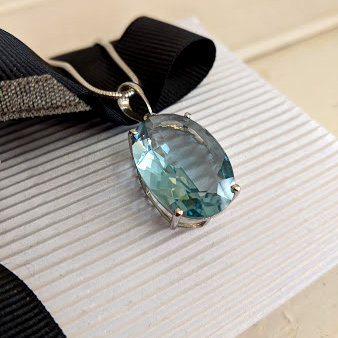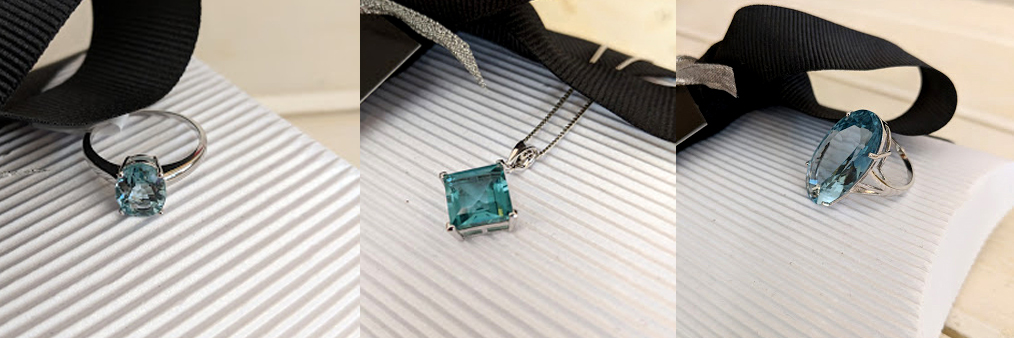Aptly named after the Latin for ‘Sea Water’, Aquamarine’s wonderful clarity and limpid transparency really does evoke cool, clean waters and the sense of plunging into a refreshing pool – preferably after lounging on a Caribbean beach!
A colour variety of the mineral Beryl (like emerald) it is relatively durable and so therefore well suited for cutting and fashioning into gemstones. The six sided prismatic crystals can be surprisingly large and specimens of in excess of 30cms (1ft) have been found on the rare occasion!
The best examples are inclusion free and with exceptional vitreous lustre – we appeared to have swallowed a gemology dictionary! All that really means is, they aren’t flawed and have the clarity of glass – the good ones are super sparkly!
Whilst it reminds us of Caribbean seas, Aquamarine is found in many locations throughout the world; amongst them are Brazil, Pakistan, Afghanistan, India, Nigeria, Mozambique, Madagascar & quite recently Vietnam.
The earliest references to Aquamarine in literature include William Langland’s 1377 ‘Concerning Piers And the Plowman‘ where it is mentioned as being an antidote to poison. Indeed, like many crystals and gemstones, Aquamarine has a whole mythology surrounding it, dating way back into antiquity.
The Egyptians, Sumerians and Hebrews regarded it as a symbol of happiness and ever-lasting youth. The Romans believed if the image of a frog was carved into Aquamarine it could reconcile enemies. Folklore says that if worn, it can bring victory in battle and legal disputes.
Pliny (not sure whether Elder or Younger) is said to have thought it helped cure disease of the eyes and thought it an ‘all purpose’ healing stone, used to cure belching, toothache & ‘ailments of the jaw.’ There is also an abundance of evidence of its use through the ages as a divining tool and crystal balls were thought to be of superior quality if made from Aquamarine as its powers of revelation were especially good in helping to find lost things. It has even been used in rain making ceremonies – no doubt because of the allusion to water.
More modern uses has seen aquamarine traditionally been given as a March Birthstone gift and also as the celebratory gift for nineteenth marriage anniversaries.
Whether more green or blue in colour, it’s one of Vicki’s personal favourites – pop in’t shop to see our latest finds, or click here from the comfort of your sofa to take a peek!





1 Comment
May Birthstone – Stunning Emerald – eclectica of ludlow · May 1, 2019 at 10:47 am
[…] are gem quality specimens of the beryl mineral family a mineral species that includes aquamarine and it is trace amounts of chromium that give it its bluish green to dark green colouration. Some […]